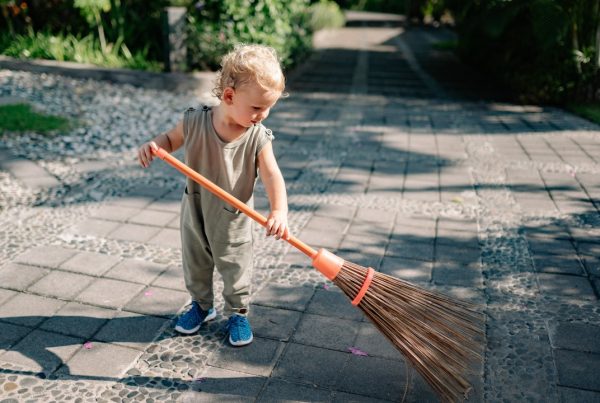
Supporting Your Child Through Heavy Work
As parents, we often notice when our child is “off”—they may be bouncing off the walls, unusually tired, easily overwhelmed, or just not quite themselves. These moments often point to challenges with sensory regulation for children, and one powerful, kid-friendly tool to help is called heavy work. If you’re new to these terms, don’t worry—we’ll walk you through what they mean, when to use heavy work, and how to incorporate it into everyday life at home.
What Is Sensory Regulation?
Sensory regulation refers to the body’s ability to organize and respond appropriately to sensory input from the world around us—sights, sounds, textures, movement, and more. For some children, especially those with sensory processing differences (like sensory processing disorder, autism, or ADHD), this regulation system doesn’t work smoothly. They may become overstimulated (too much input) or under-stimulated (not enough input), leading to behavior that seems extreme or unpredictable.
Helping children regulate their sensory systems allows them to focus, learn, and feel more at ease in their bodies.
What Is Heavy Work and how can it help?
“Heavy work” involves activities that engage the muscles and joints through pushing, pulling, lifting, squeezing, or carrying. These activities stimulate a sensory system called the proprioceptive system, which helps the brain understand where the body is in space and how much force to use.
Because heavy work provides deep pressure and muscle input, it can have a calming, organizing effect on the nervous system. It’s often used by occupational therapists to help children regulate emotions, improve focus, and reduce anxiety or restlessness.
When Should You Use Heavy Work?
Heavy work can be helpful in many everyday situations, such as:
- Before school or homework to improve focus
- During transitions or routines (e.g., bedtime, leaving the house)
- When a child is overstimulated or “out of control”
- When a child appears low-energy, sluggish, or disconnected
- As part of a daily sensory routine for regulation and emotional well-being
The beauty of heavy work is that you’re simply engaging your child in fun, purposeful movement that also supports their nervous system.
Easy Heavy Work Ideas to Try at Home
You don’t need special equipment or a therapy gym to do heavy work. Here are some simple, effective activities you can do at home:
Indoor Heavy Work:
- Carrying laundry baskets, groceries, or books
- Wall push-ups or chair push-ups
- Vacuuming rugs or carpeted areas
- Sweeping or mopping
- Wiping tables or walls
- Pushing a full laundry basket across the floor
- Stacking heavy books or boxes
- Climbing over couch cushions and pillows
- Crawling through obstacle courses or tunnels
- Kneading dough or clay
- Mixing batter or dough while baking/cooking

Outdoor Heavy Work:
- Raking leaves, digging in the garden
- Pushing or pulling a loaded wagon or stroller
- Climbing playground equipment
- Pulling a sled with weight inside
- Wheelbarrow walking (child walks on hands while you hold their feet)
- Tug-of-war with a rope or towel
- Animal walks (bear crawl, crab walk, frog jumps)
- Filling up and moving containers of water (for watering plants, “washing toys”)

Heavy work isn’t just about movement—it’s a way to support your child’s emotional and physical regulation in a natural, playful way. Whether your child is climbing on the couch cushions or hauling laundry, remember: they might be instinctively seeking the sensory input they need.
If you find heavy work makes a positive difference, consider building a daily routine around it. And if you’re ever unsure, an occupational therapist can help you design a personalized sensory plan that fits your child’s unique needs.
Your child’s journey with sensory processing is just that—a journey. With understanding, patience, and tools like heavy work, you can help them navigate it with confidence.
Article written by Maddy Stankevich, OTR/L. Maddy is an Occupational Therapist at Leaps and Bounds Therapy. Contact us today to learn more about Leaps and Bounds Providers and services and to schedule an in-home appointment. We have immediate OT openings in Antioch, Gurnee, Lake Bluff, Lake Forest, Lindenhurst and surrounding areas.
